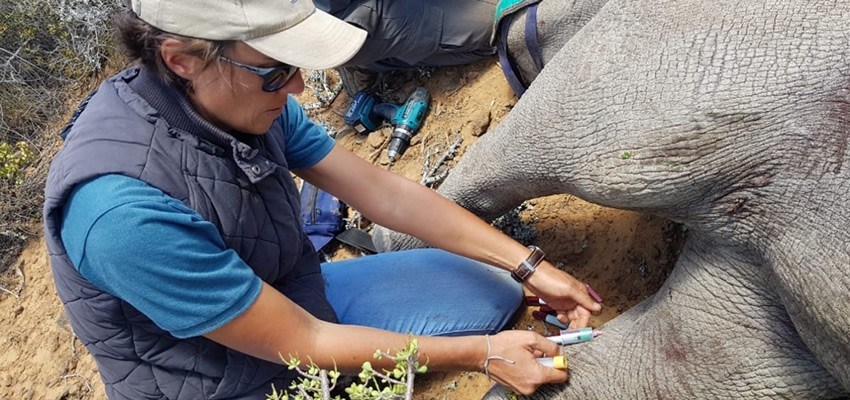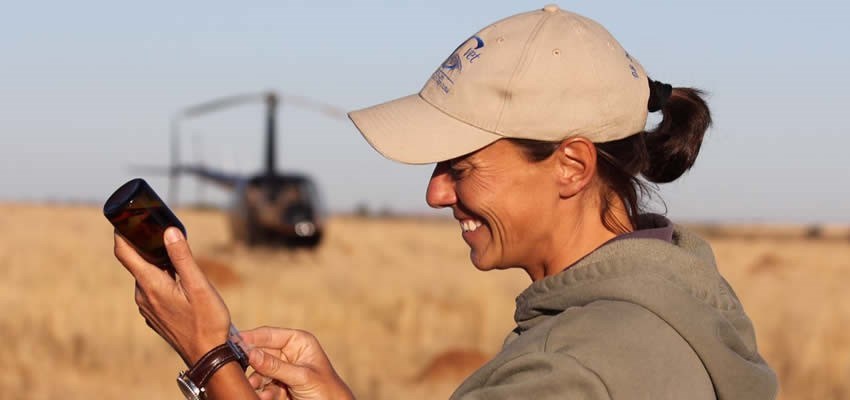In 1937 Jean-Pierre Moueix began a wine negociant business in Libourne, France, and soon added wine estates to their portfolio, including Château La Fleur-Pétrus, Château Trotanoy and the esteemed Saint-Émilion Premier Grand Cru Classé, Château Magdelaine. Granddaughter Charlotte, who grew up Libourne, remembers Magdelaine (now Château Bélair-Monange) as her favourite farm, ‘with the cliffs, the horses and the caves’.
Christian Moueix, Charlotte’s father, joined the family business in 1970 and over time added to their estates with Château Hosanna, Château Providence and Dominus, Napanook and Ulysses Estates in Napa, California. Christian was also given the responsibility of one of the greatest wine estates in the world, and for 38 vintages (leaving them in 2011) presided over Château Pétrus in Pomerol, a wine with a maximum 100 points from Robert Parker nine times.
Charlotte’s brother, Edouard is now Deputy General Manager of the estates and Vice President of the company. ‘I see him as the commercial entity of the company, travelling a lot, developing the business to the modern era’. Very much a family affair, then.
Charlotte grew up just minutes from their properties and would spend Sunday mornings walking through the vineyards with her father, studying the vines. She even worked a few summers at green harvest and at the bottling line.
‘We always had estate wines at meals, obviously, wine played a large role in our lives, we were allowed to taste wine from a very young age’. Christian held business lunches at his home, so Charlotte met many guests who were synonymous with Bordeaux and ‘we would drink the left-over bottles in the evening’.
Charlotte and Edouard moved into Bordeaux when she was ten, to attend better schools, but the importance of being a Moueix meant that they got a lot of attention, ‘you never knew if people were nice to you because of your surname’, she says. ‘It’s when moving to Paris a few years later that I realized how nice anonymity was’.
Joining the family business wasn’t in Charlotte’s plan. ‘I always saw my father more as a farmer than a winemaker. How you look after your vineyard will make the quality of the wine later. That was the important side of his job in my eyes’ and, ‘I only saw my uncle Jean-François [head of Group Videlot, which now owns Pétrus, managed by his son, Charlotte’s cousin Jean] and his family at Sunday lunches at my grandparents, so I had no link at all to his side of the business. To me, he had beautiful wine shops in Bordeaux and Paris. He was a negociant’.

Charlotte Moueix in action
So Charlotte headed to Veterinary School in Paris. ‘I followed my dream, I always wanted to become a wildlife vet, like on National Geographic, and I was blessed enough to have the support of my family in my career choices. I have never said no to the family business, but I am as passionate about my job as my father is of his’. Charlotte came straight to South Africa from Vet school. ‘Originally, I chose South Africa for its Vet University, Onderstepoort, in Pretoria where I came to do my Master’s degree. I then wrote the board exam to be allowed to work in South Africa and decided to stay and practice as a specialized wildlife veterinarian’.
A glimpse into Charlotte’s work is heart-wrenching, heart-warming and incredible. Her bio says; ‘Having gained first hand practical experience with species such as elephant, rhino, buffalo and other endangered antelope species from some of the country’s leading vets, she now runs her own wildlife veterinary practice, CVet’.
And now her work is saving and protecting wildlife, consider this extract;
Dr Charlotte Moueix arrives and we all stand looking at her, praying that she can make a miracle happen. The calf has been trying to drink mud, his mouth is packed with grey sticky clay, deep to his throat and he is so dehydrated that his eyes have ceased to lubricate, rendering him blind….Charlotte inspects him and administers the first of many saline drips and painkillers…Charlotte goes through all the options and starts formulating a rescue plan. Permits are in place and Charlotte decides on the rhino’s new home. She sits with him, calming him gently until he sleeps again. Read more
Or this;
Moueix jogs toward the animal and extracts the dart. Microchips with identifying codes are inserted so that if the animal is poached, its horns can be traced. Soon Moueix injects the calf with a reviving agent, and in three minutes the animal is trotting away, a bit dazed but unharmed. The team will dart and microchip three more calves that day. They work from dawn until dusk. Read more

A TV documentary declares;
‘In denim, wearing a cap, a woman arms her rifle with an anesthetic 1,000 times more powerful than morphine and fires at a rhinoceros from a helicopter: "Charlotte, a vet in the savannah" presents a veterinarian from South Africa, a protector of wildlife.In addition to her job as a caretaker, Charlotte volunteers with the police against horn trafficking to Asian countries and the UAE. Read more
A YouTube clip sees Charlotte removing a bullet from a Tiger, shot by accident. She says, ‘I have unfortunately been involved in a lot of rhino poaching incidents. It never gets easier. It is an animal that I have learnt to care so much for. The brutality and irrationality of these attacks have not eased, only the media are reporting them less’. Charlotte has stated previously, “We want to try to save them because, if we do nothing probably in ten years, the rhinoceros will be gone in Africa”.
‘I am very fortunate to live my dream every day’. This is obviously a calling for Charlotte, and wine? ‘In the past few years, I have been travelling more regularly to Napa Valley, to Dominus and Ulysses, to visit my father there. It is much easier to spend quality time with him there. I go to Stellenbosch as often as possible. It is a magnificent area with friendly people and I enjoy tasting the different South African wines’.
‘Once again, you never know what life could bring, and I am not saying “no” to maybe getting involved in the wine industry in South Africa, one day’.